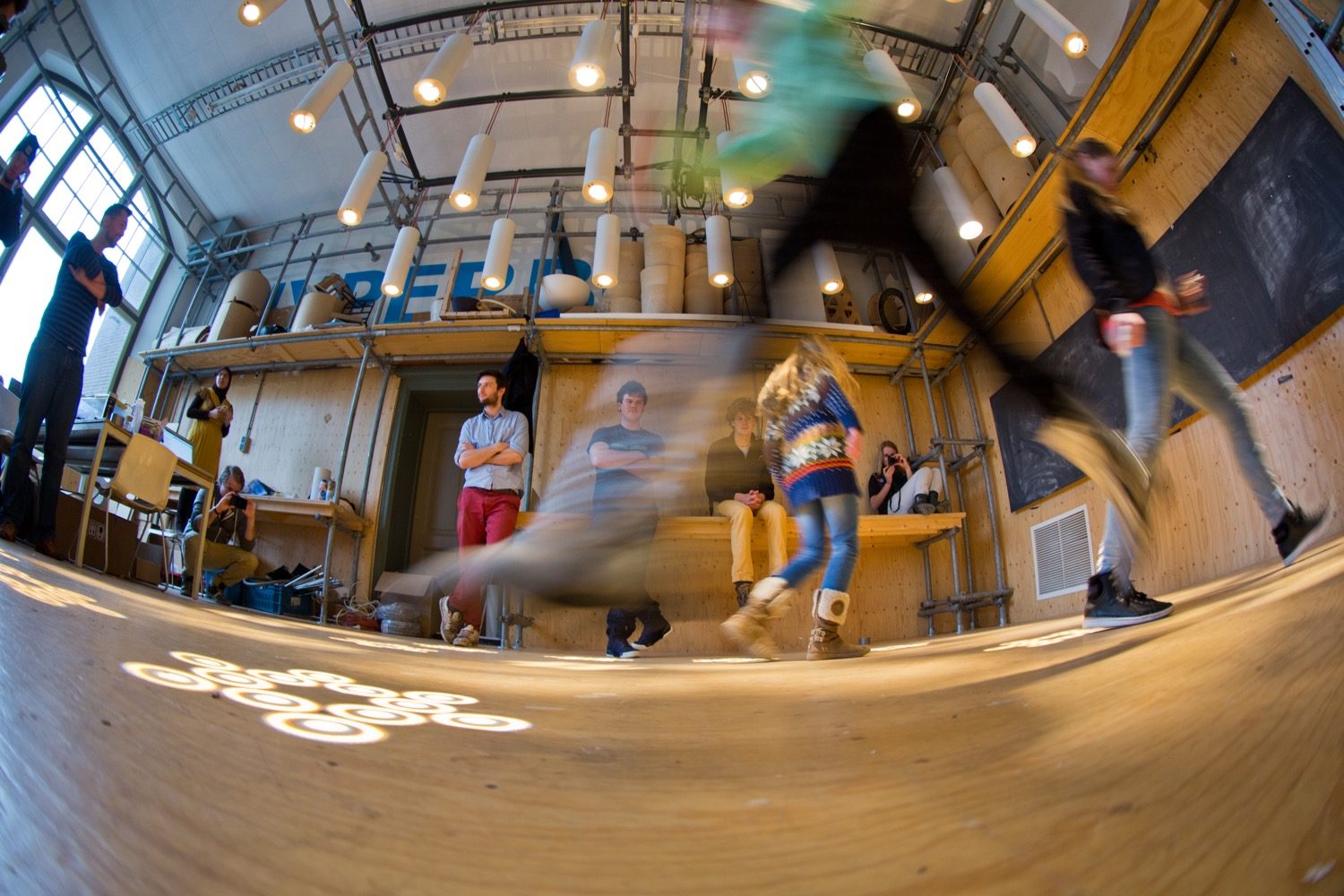
Seina
Students: Assmae Amrani, Jesse Beem, Teresa Baena, Jules Dudok, Tomas Giele, Tom Hemmes, Thijs Langbroek, Dima Politin, Donna Stam.
Coaches: Sara Ferrari, Aadjan van der Helm, Tomasz Jaskiewicz, Marco Rozendaal.
During the minor Interactive Environments 2013/2014 project SEINA was founded. This first semester of 2014 we created a full-scale experiential prototype with a multi-disciplinary team of nine students.
The installation
Our project aims to revitalize public spaces through the use of an embedded interactive play. We have designed an interactive public installation, where children will be encouraged to interact with each other through optical augmented light patterns. We aim to develop interactions that would turn public spaces into more vibrant places where children want to spend time and meet new friends.
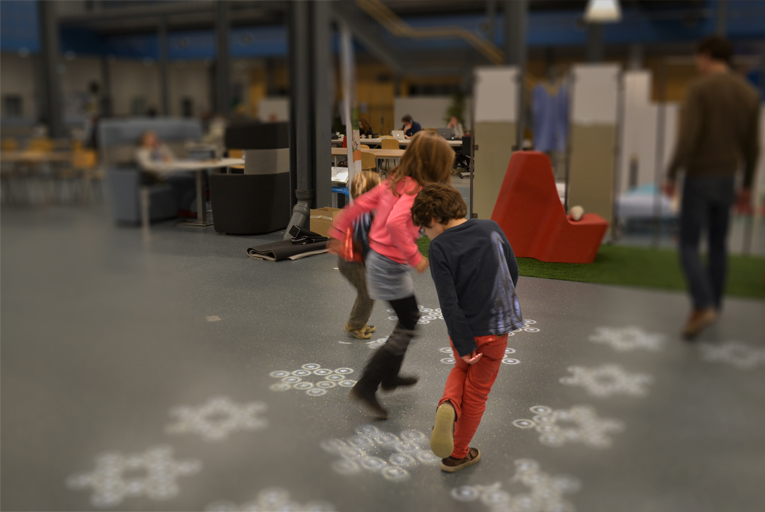
Without any explicit guiding the children understood the environment and invented their new favorite games
‘SEINA’ is an interactive light installation. In this social environment, a grid of white lamps is hanging from the ceiling, creating patterns on the floor. From a design perspective, it is incredible to think about the effect it can have on people’s experience in a given space.
When participants join in the environment, the installation immediately detects their presence; this way they can leave a path by altering light projections on the floor. If no one is near, it shows (replays) the previous walked paths. The path on itself visually attracts other people. Everyone can create and adapt the environment by being physically active. This way it really becomes a collaborate experience.
The module
Compared to existing approaches for realizing interactive installations, our method is making use of distributed systems. There is no central control for aggregation and dissemination of information. Each computational element is responsible for reacting to local stimuli. This improves scalability and robustness but also creates a very local response for user input. Important consequences of this design are that: the system becomes modular and thus scalable, meaning that it can be easily extended with little configuration effort needed.
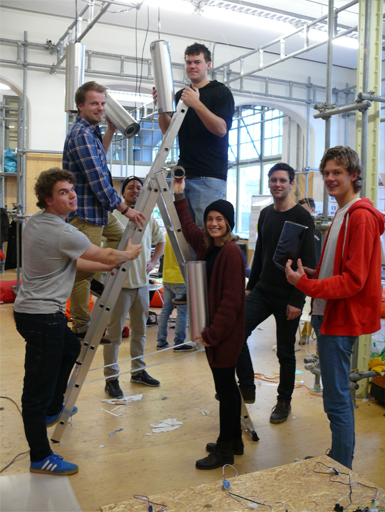
Even when replacing a broken module the team keeps smiling, the choice for a modular proves to be the best option.
The system is also highly tolerant to failures, as the malfunctioning of a component will be regarded as the component being simply disconnected. The malfunctioning of a single module will not affect its surrounding modules.
What’s more, the system is easy to maintain as it is formed from identical elements with no restrictions on how they should be assembled together. The remarkable aspect of our prototype is the ability to extend its functionalities beyond the initial set of requirements. Due to its flexible system architecture we are able to integrate new functionalities after the deployment has taken place. By new functionalities we understand both sensing and actuation modalities but also new interactive behaviours and interaction scenarios.
How it’s made
Three different types can categorize all parts in each module.
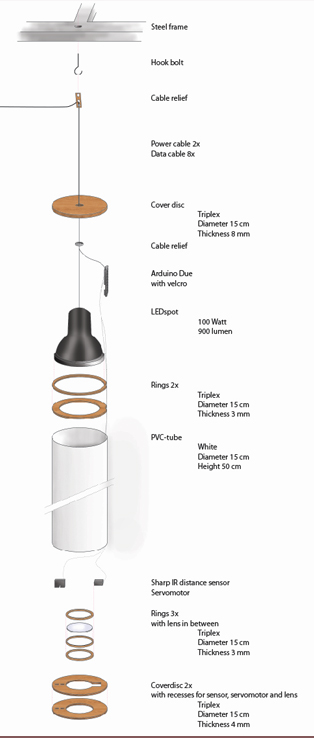
This exploded view shows the modules interior and exterior.
First the exterior; the white PVC tube used as outer layer for the module cut to pieces measuring 150mm diameter and 500mm height. The tube is white to match the hospital environment and also to avoid any distraction while experiencing the light projection.
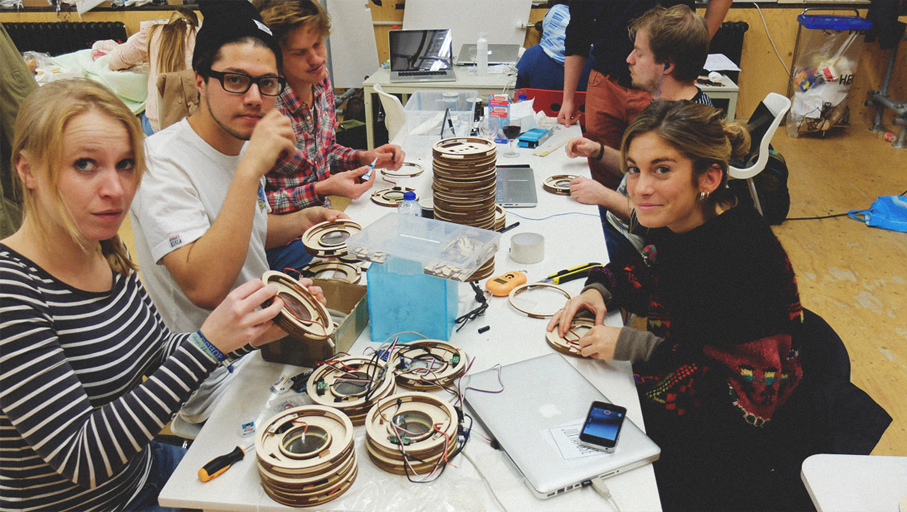
Assembling the wooden frame after laser cutting.
Secondly the frame; for support of the inner parts a frame was laser cut from triplex. The different wooden parts were attached and locked inside the tube with two-component glue. The wooden frame was designed for the electronics to fit precisely.
At the top and the bottom this wooden frame is visible from the outside. The warmth of the wood is in contrast with the white plastic exterior and makes it seem like the lamp has a wooden core.
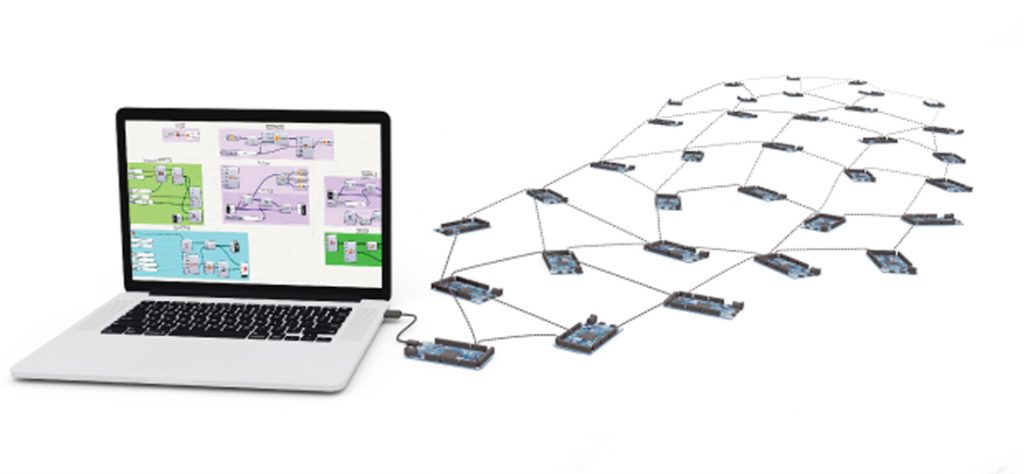
The third type includes all inner parts. These are light and lens, sensor, servomotor and microcontroller. The parts are screwed onto the wooden frame. All wires connecting these parts are taped to the inside of the tube to avoid interference in the light projection.
The software for the Arduino Due microcontrollers in each lamp is based on a system called Hivekit. HiveKit is a toolkit for programming networks of interactive objects. In cooperation with the creators of HiveKit we developed a Grasshopper model (plug-in for Rhinoceros 3D), after translating this model to Arduino code we could upload this to the Arduino in one of the lamps. Because all lamps are connected via the serial-ports on Arduino, this Arduino code will spread across the whole network. As mentioned before, by using this method there is no limitation for the amount of lamps in the network.
In the spotlights
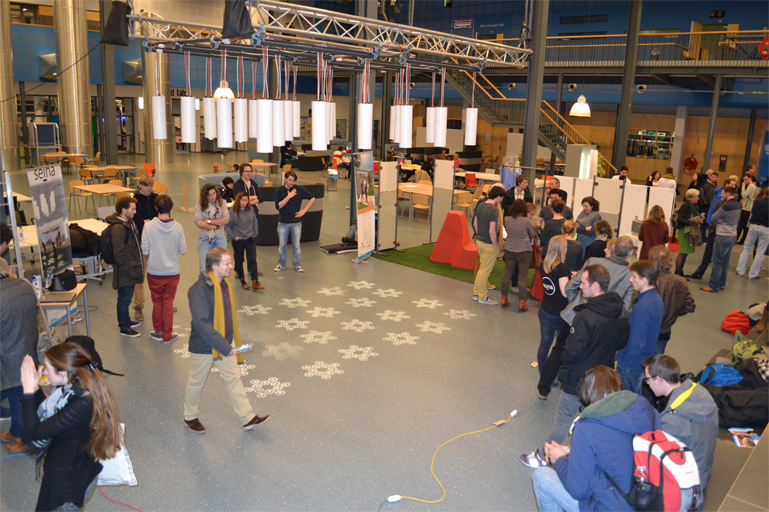
The Interactive Environments exposition in the Faculty of Industrial Design.
After finalizing the experiential full-scale prototype the team presented SEINA at multiple exhibitions. First of which was the exposition of all projects created during the Minor Interactive Environments. This exhibition in the Faculty of Industrial Designs main hall attracted already a lot of attention for Seina. Both students and visitors of the interaction design conference were very interested. While presenting our project we made up a term that suits our project the best; delayed presence.
[tweet by chrisspeed]Delayed presence in the Seina project @tudelft design school https://t.co/u7vfHuxzpq— chrisspeed (@chrisspeed)
The second time Seina showed itself to the public was in Amsterdam. Interaction Design conference IxDa made its way to Amsterdam and Seina was one of the projects presented besides the very interesting lectures. A lot of international professionals in the field of interaction design were fascinated by the project. IxDa14 was overall a very inspiring moment for us to continue the project, even though the minor had officially ended.

The exposition at IxDa14 in Westergasfabriek, Amsterdam.
As for this moment, the installation moved from the Hyperbody space to the Studio in the Science Center. We are very proud that the installation has become part of the official collection in the Science Center. For the near future we are focussing on the Princes Maxima Center, the place our installation was initially intended for. We have high hopes for Seina to be part of the interior pilot for the Princes Maxima Center, to be continued…
Team Seina
Credits
Students
Assmae Amrani, Jesse Beem, Teresa Baena, Jules Dudok, Tomas Giele, Tom Hemmes, Thijs Langbroek, Dima Politin, Donna Stam
Instructors
Aadjan van der Helm, Marco Rozendaal, Chris Kievid
Commissioned by
Princes Maxima Centrum, ID Studiolab, TU Delft
Sponsored by
Philips, DutchSpace, ZonMw, HiveKit, Snoerboer.nl
